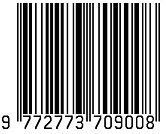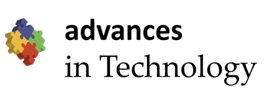Statistical Model for the Quality of Panoramic Images of Mural Paintings
DOI:
https://doi.org/10.31357/ait.v2i1.5388Abstract
Panoramic image creation is crucial in area of digital imaging. It is developed by combining an overlapped image component series of a large image, which is difficult to be focused on using a normal camera due to a large field of view. Measuring the quality of panoramic images is a challenging task. Therefore, the objectives of this research are to find the attributes of visual quality of panoramic images and to propose predictor variables for a statistical model for the quality of panoramic images of mural paintings. Authors have used a proposed novel method for creating panoramic images of mural painting. In this study, authors researched on the quality attributes of digital images. Accordingly, color balance, noise and distortion were identified as the two most critical factors which affect the overall quality of the panoramic images. Authors visited three temples and captured digital images of mural paintings of large scale using a simple method. Then, panoramic images were created using three methods: the novel method with other two methods, Photoshop (available in the market) and Hugin (open source software). Subjective evaluation was applied through experts in the field of Visual Arts. Participants were asked to rate the quality using four-point Likert scale for color balance, noise and distortion as predictor variables and overall quality as the response variable of panoramic images. Ordinal logistic regression was fitted through Minitab statistical package and the results showed that color balance and noise and distortion are two important attributes for the quality of the panoramic images. Moreover, the collected data fit the model at a higher accuracy.
Full paper submission of ICIET 2021

Downloads
Published
How to Cite
License
Copyright (c) 2022 Ajith Premakumara Wickramasinghe, Anusha Jayasiri

This work is licensed under a Creative Commons Attribution-NonCommercial-NoDerivatives 4.0 International License.
The Authors hold the copyright of their manuscripts, and all articles are circulated under the terms of the Creative Commons Attribution License, which permits unrestricted use, distribution, and reproduction in any medium, as long as that the original work is properly cited.
The use of general descriptive names, trade names, trademarks, and so forth in this publication, even if not specifically identified, does not imply that these names are not protected by the relevant laws and regulations. The authors are responsible for securing any permissions needed for the reuse of copyrighted materials included in the manuscript.




